Introduction: The Revelation of Tomorrow
Imagination is more important than knowledge. – Albert Einstein
When Einstein made this statement, he was emphasizing the power of creativity and innovation. In the context of our rapidly evolving world, it rings especially true as we contemplate the architecture of future cities. As we stand on the brink of an energy breakthrough with fusion and the rise of artificial intelligence (AI), imagination fuels the vision for smarter, more sustainable urban landscapes that transcend traditional limitations.
What if our cities could not only house us but also think and adapt? What if they could harness the energy of stars to fuel our lives while being guided by intelligent systems? In the realm of future city planning, this is not mere fantasy; it is a provocation to all of us. Our urban environments are far from perfect, grappling with overpopulation, pollution, and energy scarcity. Fusion-powered cities, coupled with AI management, promise a revolution where sustainability and technology walk hand in hand, transforming urban life into a blend of efficiency and harmony.
This article aims to delve into the fascinating potential of AI-driven fusion energy and its role in reshaping the urban landscape. Drawing inspiration from visionaries like Elon Musk, Stephen Hawking, and Jane Jacobs, we will explore how the marriage of technology and urban planning can create the cities of tomorrow.
1. The Foundations of Fusion Energy: Powering the Future
Welcome to the star-studded science behind our potential energy revolution! Fusion energy stands at the forefront of technological advancements, aiming to provide a clean, sustainable power source that can outshine the finest fireworks display. But what exactly is it, and why does it matter? Let's break it down.
- 1.1 Understanding Fusion: The Basics
- Definition of nuclear fusion: Fusion is the process that powers the sun and other stars. It occurs when two light atomic nuclei collide at high energy and combine to form a heavier nucleus, releasing a massive amount of energy in the process. Picture this: a cosmic game of merging atoms that creates enough energy to light up cities!
- Advantages of fusion over fission and fossil fuels: Unlike fission, which splits heavy atoms and produces radioactive waste, fusion offers a cleaner and safer alternative. The main raw material for fusion, isotopes of hydrogen, are abundantly found in water, making abundantly accessible fuel. Plus, fusion reactions produce no carbon emissions – a real win for the environment! Who wouldn’t want a power source that pairs clean energy with safety?
- 1.2 Projects and Innovations in Fusion Technology
- Overview of ITER and other leading fusion research initiatives: The International Thermonuclear Experimental Reactor (ITER) in France is the most ambitious fusion project today, aiming to prove the feasibility of fusion on a commercial scale. Think of it as the ultimate science fair project only on a global scale! Meanwhile, other innovative smaller-scale projects like those by startups such as TAE Technologies are racing to bring fusion energy closer to reality.
- Emerging technologies that are bringing us closer to practical fusion energy: Advancements in magnetic confinement and inertial confinement technologies are crucial in the fight to tame fusion energy. Breakthroughs like high-temperature superconductors and laser technologies are paving the way to make fusion energy as accessible as your morning coffee. Once we get it right, the cities of tomorrow could be chugging along like a well-oiled machine powered by the very force of stars!
2. AI’s Role in Urban Planning: A Smart Paradigm Shift
The integration of AI into urban planning is like adding rocket fuel to a bicycle; it supercharges the traditional methods and takes cities to new heights. Imagine city planners equipped with super-smart algorithms that predict everything from traffic jams to when the trash cans need emptying. That's the power of AI! Here’s how it could change the urban game:
- 2.1 Intelligent Infrastructure: Efficiency Beyond Imagination
AI can transform infrastructure into something smarter than your average superhero. Picture smart grids powered by fusion energy that minimize electricity waste. These grids can adjust power distribution based on real-time need, reducing blackouts and saving money. And let’s not forget about AI-driven traffic management systems that can analyze and respond to traffic patterns faster than you can say “rush hour.” Cities could reroute traffic or adjust signal timings, allowing us to get home quicker—maybe even in time for dinner!
- 2.2 AI-enhanced Public Services: From Waste Management to Health Care
What if your city’s waste management was as easy as ordering pizza? Thanks to AI, it might just be! Municipal services can be automated, optimizing pickup routes and schedules, so trash gets cleared without a hitch. There are already cities like San Diego exploring this. Not only does it keep the streets clean, but it can also save on fuel costs. Plus, AI can help enhance public health services, predicting outbreaks of ailments before they become problems. We might even reach a point where our city knows when we’re coming down with a cold before we do—just kidding! But imagine the preventative care possibilities!
3. Sustainable Living: Eco-Friendly Urban Development
The friendship between fusion energy and AI isn’t just about power; it's also about keeping our Earth happy and healthy. Together, they pave the path for sustainable living in urban environments, ensuring our cities thrive while minimizing their carbon footprints. Let's explore how:
- 3.1 Green Architecture and Urban Design
What does sustainable city living look like? Well, imagine eco-friendly buildings that breathe life into concrete jungles. Using AI, architects can design structures that harness natural light, reduce energy consumption, and adapt to environmental changes. Cities like Melbourne are already embracing these innovative designs, creating green spaces where urban life flourishes. Not only do these designs look fantastic, but they also use fusion energy for heating, cooling, and lighting, making them planet-friendly!
- 3.2 Enhancing Urban Biodiversity: AI at Work
Let’s not forget about our furry and feathered friends! AI can play a crucial role in monitoring urban ecosystems, ensuring that cities don't just expand but also support local wildlife. Imagine using sensors and algorithms to track bird migrations or analyze the health of urban greenery. With cities like Boston working tirelessly to improve urban biodiversity, we’re poised to strike a balance between urban growth and nature conservation. AI can help protect species and make sure that our cities remain vibrant ecosystems instead of concrete deserts.
4. Social Implications: Reshaping Society Through Technology
The integration of AI and fusion-powered cities goes beyond technology; it promises to reshape our entire society. As we consider this future, two significant themes emerge: equity and accessibility, and the future of work. These themes will play pivotal roles in how urban environments evolve.
- 4.1 Equity and Accessibility: Bridging the Gap
As we delve into the intersection of technology and society, it's crucial to ensure that everyone benefits from advancements in urban design and energy sources. This means:
- Ensuring Equal Access: One of the primary goals of AI integrated cities is to provide equal access to services, regardless of socioeconomic status. This involves:
- Establishing affordable connectivity so all residents can access smart technology.
- Utilizing AI to identify and address gaps in resource distribution.
- AI’s Role in Addressing Social Inequalities: AI can help identify areas of need, allowing for targeted interventions. How? Here are some approaches:
- Data analytics to assess community resources and needs.
- Predictive algorithms that help in proactive public service distribution.
- 4.2 The Future of Work in Fusion-Powered Cities
As AI technologies become central to urban life, the nature of work will also evolve. Here are some significant trends:
- Jobs Transformation: Many jobs will change, requiring new skills, such as:
- Technicians who maintain AI systems and infrastructure.
- Urban planners skilled in integrating AI into city layouts.
- Preparing the Workforce: To adapt to this evolving job market, education programs must shift focus:
- Offering courses on coding, data analysis, and urban technology.
- Encouraging partnerships between schools and tech companies to provide real-world experience.
5. Challenges and Limitations: What Lies Ahead?
With great promise comes great responsibility. The pursuit of fusion-powered cities and their integration with AI does come with significant challenges. Recognizing these obstacles now, can help us better prepare for the future.
- 5.1 Technical and Scientific Hurdles
The road to implementing fusion technology on a widespread scale is not without bumps. Here are some important challenges:
- The Current State of Fusion Technology: While significant progress is being made with projects like ITER, practical fusion power is not yet a reality. Consider the facts:
- Fusion reactors are still in experimental stages, aimed at proving feasibility.
- Public investment best practices linger as many don’t see immediate returns on funding.
- Public Skepticism Toward Nuclear Technology: The term "nuclear" can evoke fears due to past accidents. To combat this:
- Educating the public on the safety of fusion compared to fission.
- Highlighting the benefits of clean energy sources through awareness campaigns.
- 5.2 Regulatory and Ethical Considerations
The melding of AI and urban life also brings regulatory challenges that must be addressed. Here are key points to consider:
- Proposed Frameworks for AI Governance: Developing clear guidelines regarding:
- Data privacy and security to protect citizen information.
- Accountability for AI-driven decisions, especially in public services.
- Ethical Implications of AI Decision-Making: The use of AI in public spaces raises questions:
- How do we ensure fairness in AI algorithms?
- What measures are in place to prevent bias in automated decisions?
6. AI Solutions: Bridging Technology with Urban Progress
The integration of artificial intelligence into fusion-powered urban environments offers innovative solutions that could reshape how cities function. As we navigate this complex landscape, let’s explore ways AI can tackle the multifaceted challenges posed by urban development.
- 6.1 Data Integration: Creating Comprehensive Models
- Utilizing big data to forecast energy needs and urban traffic flows is paramount. By leveraging data from sensors across cities, AI can create dynamic models that predict demand patterns. These models will allow city planners to optimize energy distribution networks and reduce congestion.
- Collaboration with tech giants such as IBM through their Smarter Cities initiative, will provide data analytics capabilities that can streamline urban operations and ensure efficient resource usage.
- 6.2 Implementing AI-driven Decision Frameworks
- Machine learning algorithms are essential for optimizing energy management systems. For instance, AI can analyze consumption trends in real-time and adjust energy supply from fusion generators to maintain equilibrium in grids, reducing waste and costs.
- Cities can look to open-source AI tools like TensorFlow or PyTorch for developing custom solutions tailored to local needs in energy management.
- Training urban planners and decision-makers on AI tools is crucial. Collaborating with institutions like the Massachusetts Institute of Technology (MIT) can provide workshops and certification programs that empower local governments to implement these technologies effectively.
Action Schedule/Roadmap (Day 1 to Year 2)
- Day 1: Establish a task force consisting of urban planners, AI experts, and fusion energy researchers to outline a vision for AI-fusion integration.
- Week 1: Host the first round of public forums in communities to gather concerns and aspirations regarding urban transformation. Engage participants with empathy and understanding, learning about their perspectives.
- Month 1: Create a comprehensive report summarizing community feedback and setting the groundwork for an AI-fusion blueprint that aligns with public sentiment.
- Month 2: Agilely begin pilot research with local universities such as Stanford University and Princeton University to explore AI applications specifically geared towards urban efficiency.
- Month 3: Launch an exploratory development program where students from these institutions can contribute towards hands-on AI projects aimed at practical community-scale solutions.
- Month 4: Partner with companies in the tech sector like Microsoft to incorporate their sustainability models and cloud services for data management.
- Month 6: Start deploying smart sensors across partner neighborhoods, gathering data on energy usage, traffic patterns, and public service responsiveness.
- Year 1: Analyze data collected during the first 6 months to develop predictive models, employing AI to optimize resource allocation and promote sustainability.
- Year 1.5: Begin implementing pilot AI-driven solutions in city infrastructure, establishing open lines of communication with citizens to receive continuous feedback on improvements.
- Year 2: Launch a comprehensive evaluation of the pilot programs and use results to refine AI-driven frameworks aimed at long-term urban sustainability and resilience. Engage local media and platforms to share success stories and best practices with a broader audience.
Conclusion: The Path Forward
In the midst of an accelerating technological landscape, the combination of AI and fusion energy stands as an audacious beacon guiding us towards sustainable urban futures. Picture not just green parks and smart traffic lights but living cities – an intricate web pulsating with the lifeblood of knowledge and ecology. Imagine how cities could emerge as not merely places to live but as vibrant ecosystems of innovation, social equity, and environmental stewardship. The journey to unlock the full potential of these advanced technologies requires a collaborative spirit, a shift in societal values, and an unwavering commitment to inclusivity. As we drive forward into this uncharted territory, every stakeholder, from policymakers to everyday citizens, bears a responsibility to contribute meaningfully. Together, we can create urban environments that harness the power of AI and fusion, changing the narrative of our cities for generations to come. What kind of city do we want to create? One that thrives on the principles of sustainability and community or one that lingers in the shadows of outdated systems? The choice is ours, and the time is now.
FAQ
- What is fusion energy? Fusion energy is a type of power created by fusing two light atomic nuclei to make a heavier nucleus. This process releases a lot of energy. It’s how the sun generates its energy! For more information about fusion energy, check out [Wikipedia's Fusion Energy Page](https://en.wikipedia.org/wiki/Fusion_power "Learn more about fusion energy").
- How does AI improve city management? AI, or artificial intelligence, helps cities run better by analyzing data quickly. It can predict what resources we’ll need, help manage traffic, and even keep our public services efficient. For a glimpse into how AI is changing urban landscapes, visit [MIT's Research on AI and Cities](https://www.media.mit.edu/research/ "Discover MIT's research on AI").
- What are the environmental benefits of fusion-powered cities? Fusion-powered cities can drastically reduce harmful waste and greenhouse gas emissions. They use fuel sources that are much more abundant than current fossil fuels. This means cleaner air and a healthier planet for everyone. Learn more about these benefits from the [World Nuclear Association](https://world-nuclear.org/information-library/current-and-future-generation/fusion-power.aspx "Explore the promise of fusion power").
- Are there any current fusion energy projects? Yes, there are exciting projects happening around the world! One major project is [ITER](https://www.iter.org/ "Learn about ITER") in France, which aims to make fusion energy a practical reality. Another significant effort is the National Ignition Facility in the USA, which you can learn about [here](https://www.llnl.gov/ "Explore the National Ignition Facility").
- How can citizens get involved in smart city initiatives? Citizens can engage in smart city initiatives by attending public forums, sharing their ideas online, and supporting local policies that promote new technologies. You can become involved in community discussions by joining platforms like [Nextdoor](https://nextdoor.com/ "Join community discussions on Nextdoor").
- What challenges do fusion-powered cities face? Although fusion energy is promising, some challenges include technical hurdles in making the technology efficient and safe. Skepticism around nuclear energy, regulatory issues, and ethical concerns about AI also need to be addressed. To dive deeper into these challenges, look at [The Fusion Industry Association](https://www.fusionindustryassociation.org/ "Discover fusion industry insights").
- Will fusion power affect jobs in the city? Yes, as new technologies like fusion energy and AI come into play, some jobs will evolve while new ones will emerge. Workers may need to develop new skills to keep up with the changes. Interested in future work trends? Check out the [World Economic Forum](https://www.weforum.org/ "Explore future work trends with the World Economic Forum").
- Can AI help with environmental issues in cities? Absolutely! AI can monitor pollution levels, predict climate impacts, and optimize energy usage. Cities are using AI to create greener spaces that improve urban biodiversity. For insights on AI and environment, visit [Nature Conservancy's Page on AI for Nature](https://www.nature.org/en-us/what-we-do/our-work/ai-for-nature/ "Learn how AI can help environmental efforts").
Wait! There's more...check out our gripping short story that continues the journey: The Heartbeats of Dreams
Disclaimer: This article may contain affiliate links. If you click on these links and make a purchase, we may receive a commission at no additional cost to you. Our recommendations and reviews are always independent and objective, aiming to provide you with the best information and resources.
Get Exclusive Stories, Photos, Art & Offers - Subscribe Today!
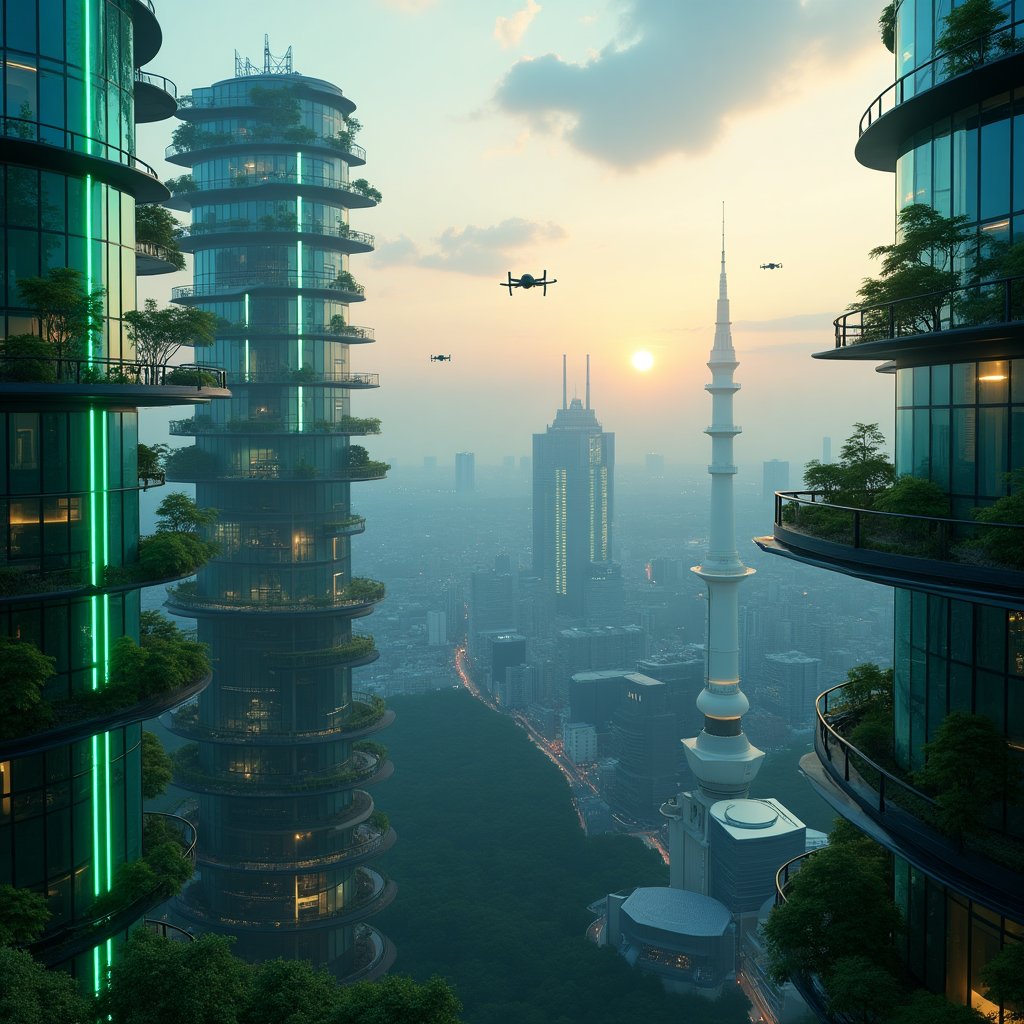
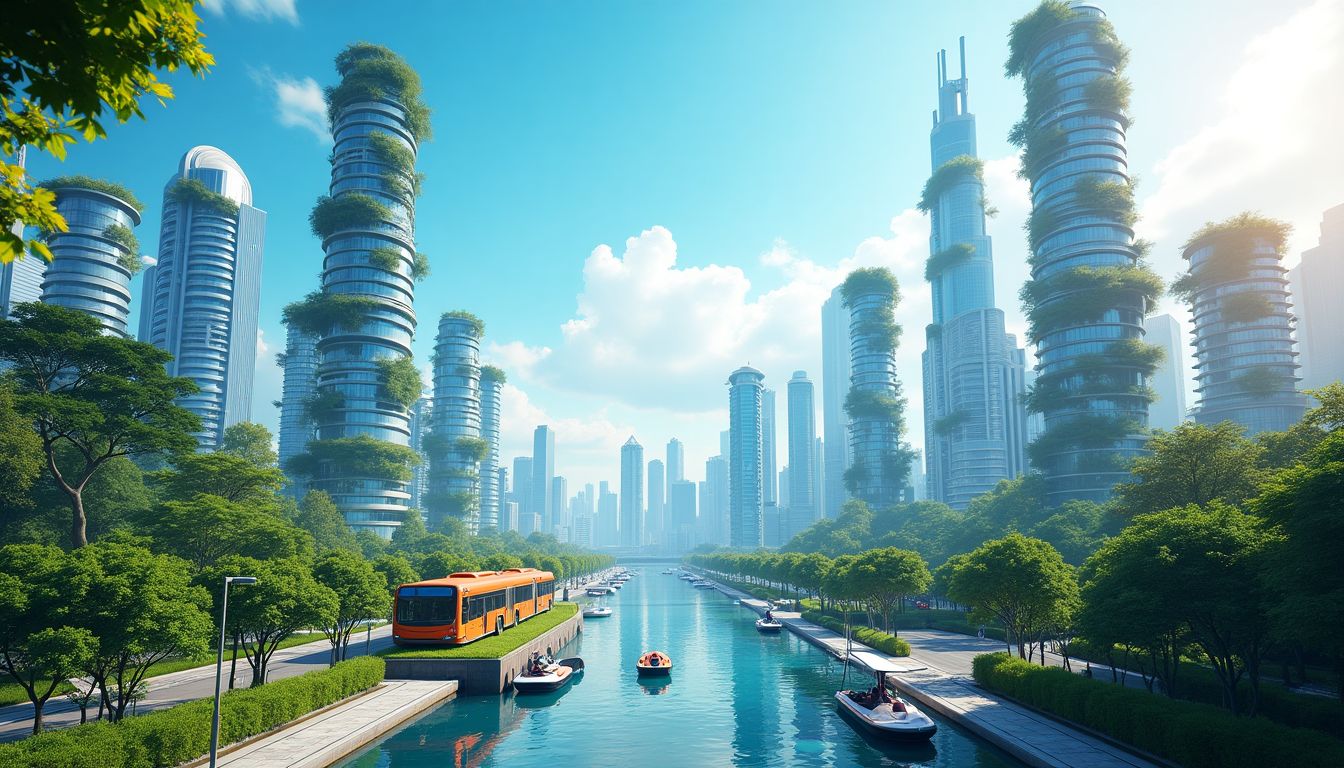
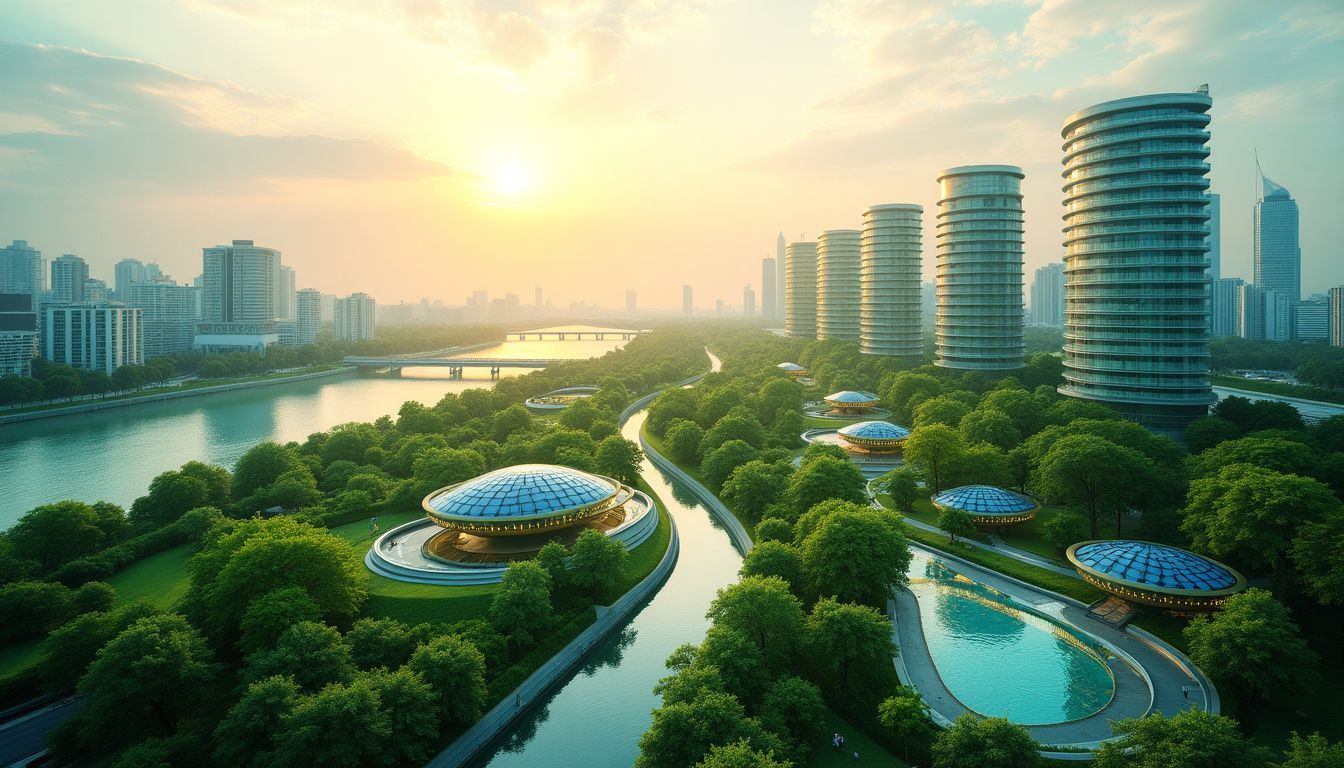
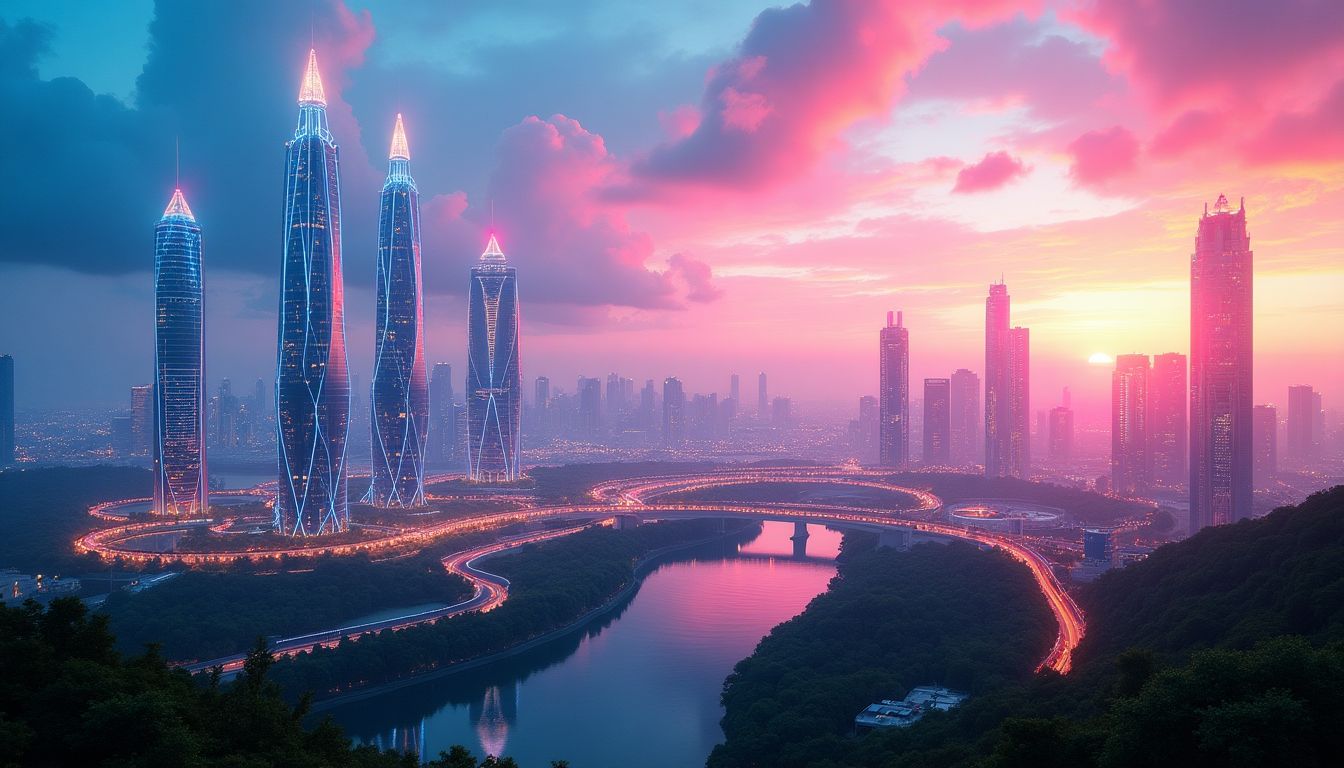
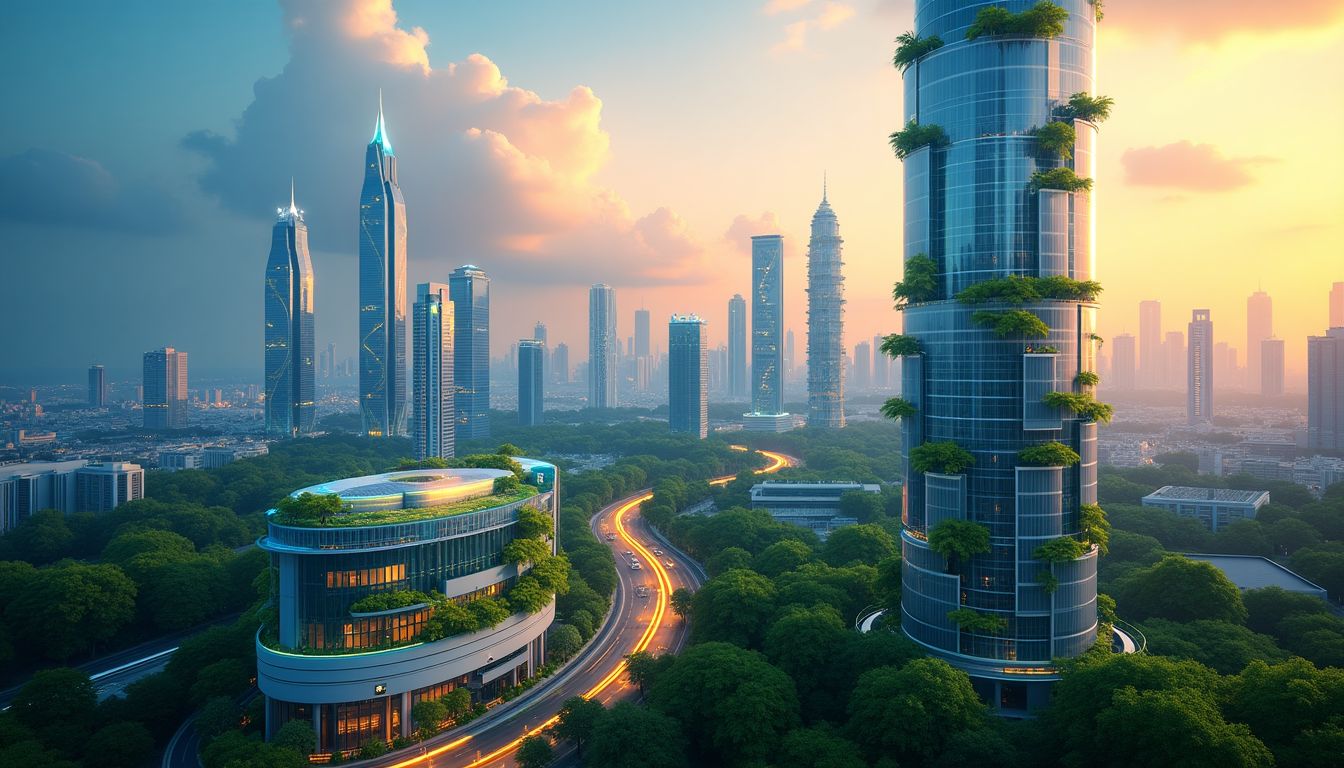
























Post Comment
You must be logged in to post a comment.